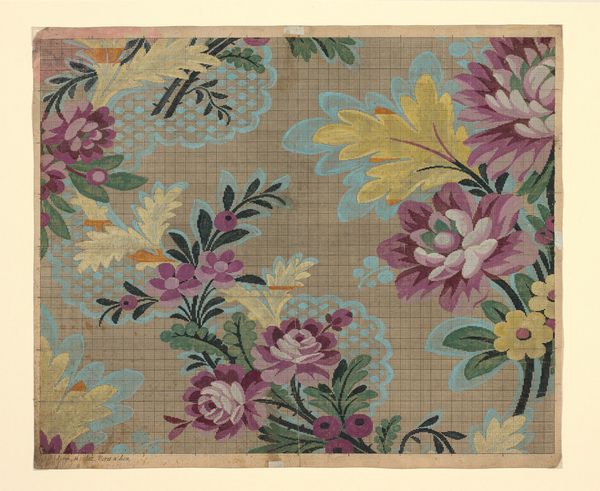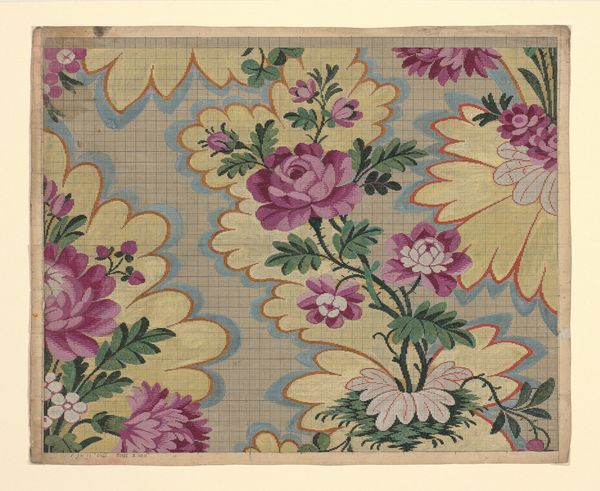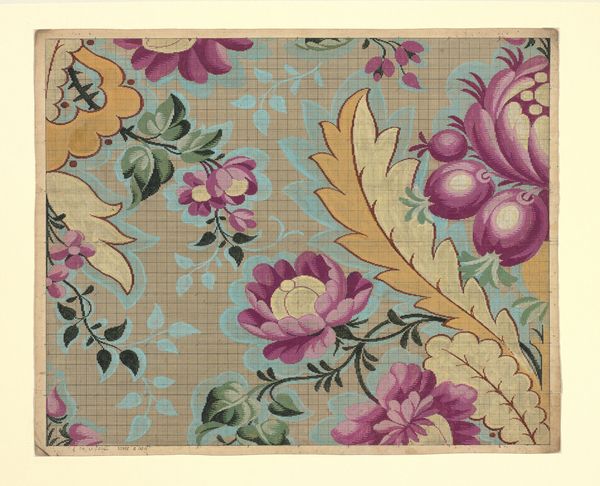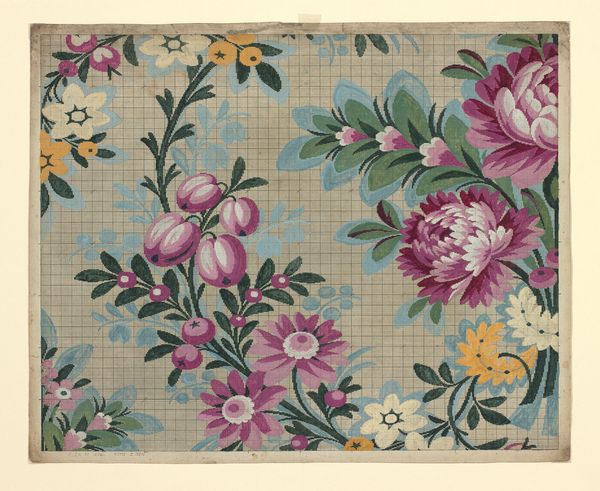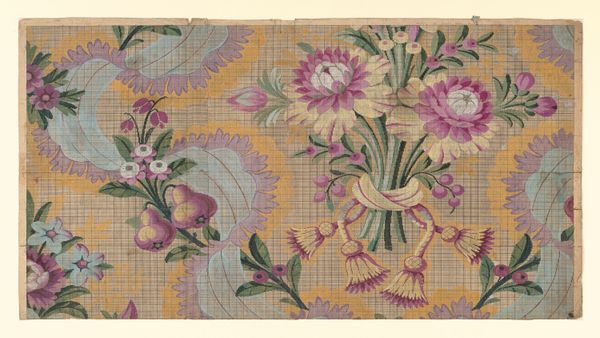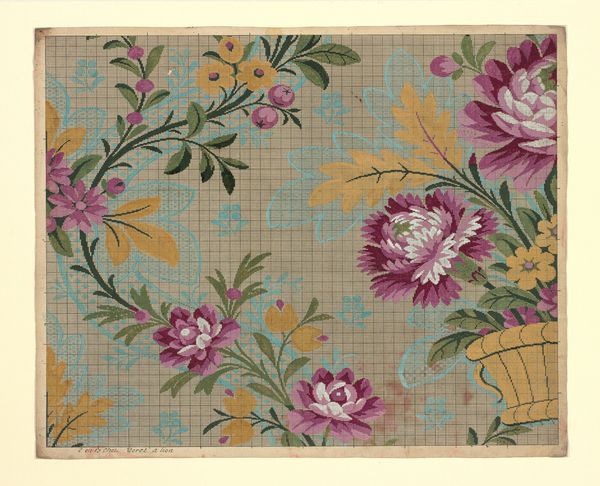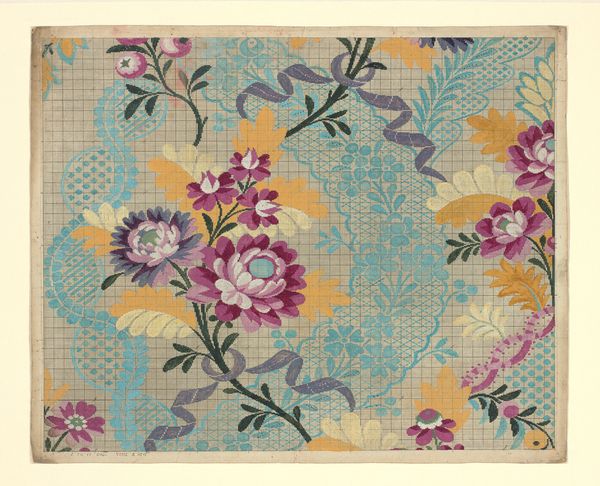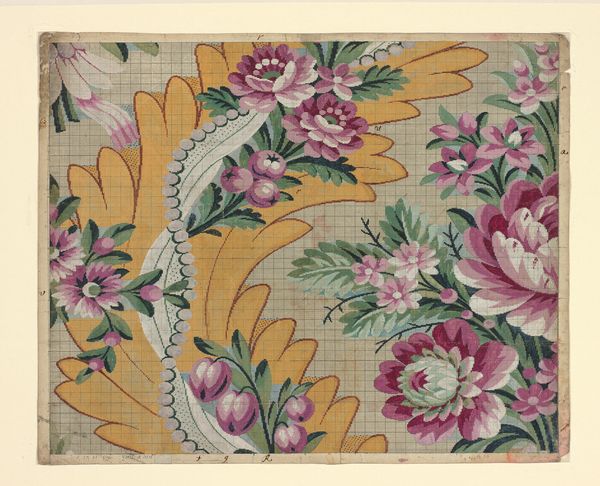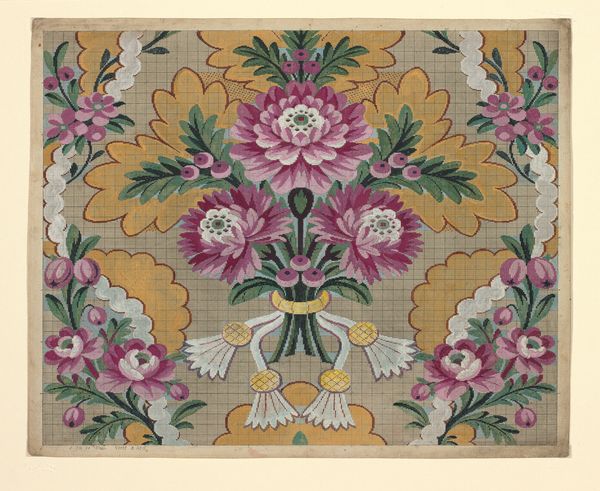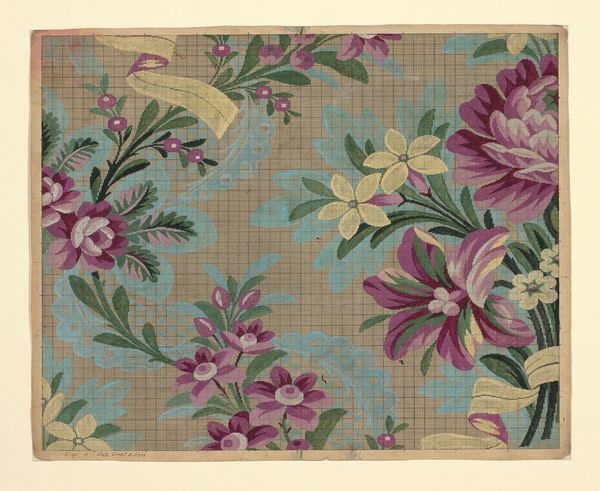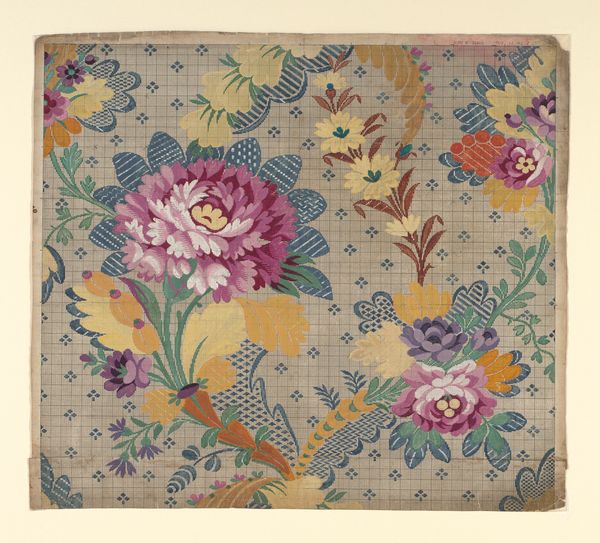
Dimensions: 44.5 × 81.9 cm (17 1/2 × 32 1/4 in.)
Copyright: Public Domain
Curator: Let’s discuss this intriguing "Mise-en-carte (Point-paper)," created sometime between 1760 and 1790. It’s a gouache drawing on paper, currently held here at the Art Institute of Chicago. Editor: My first thought? Utterly captivating! It feels like a secret garden, all delicate florals rendered with a pleasing formality and the colors whisper rather than shout. Curator: Exactly! "Mise-en-carte" translates roughly to "putting into a card," referring to the meticulous process of mapping out textile designs. Notice the grid beneath the floral motifs; it served as a guide for weavers. These point papers are artifacts of labor-intensive artistry from the Rococo and early Romanticism periods, showcasing French ingenuity and the luxury textile trade. Editor: You're right to emphasize labor. Looking at this grid, the minute details of each leaf and petal, all realized by hand – I imagine the craftsperson hunched over this for hours. Think of the cost, the labor value imbued in that textile had it been woven according to this model! Curator: Beyond its functionality, the pattern itself carries symbolic weight. Floral motifs are consistently associated with femininity, delicacy, and beauty. This piece likely reflects the idealized vision of nature during that era and the cultural association of flowers and the upper classes. We often see these types of floral designs incorporated into clothing or the interior designs of elite households. Editor: The layering of these colors adds to that idealized notion, a dreamy unreality – powder blue alongside gold and lilac! I am also very intrigued by how "raw" the rendering looks. If this pattern were woven, how long would the fabric retain the visual texture from this prototype? Curator: An interesting observation! And there’s a tension between this preparatory design, born of precision and technique, with what the end product promises, inviting interpretations related to cultural values around production and high-status materials. Editor: True, it allows us a peek behind the curtain of production. The tension highlights how industrialization slowly began to alter artistic creation, and by extension cultural valuation. Curator: A potent reminder that even seemingly decorative arts carry rich cultural and social narratives. It gives you an appreciation for how so much planning would ensure proper translation of such a decorative piece into a textile. Editor: And the story it holds within its intricate patterns, inviting us to contemplate labor and artistry and its implications across generations.
Comments
No comments
Be the first to comment and join the conversation on the ultimate creative platform.
